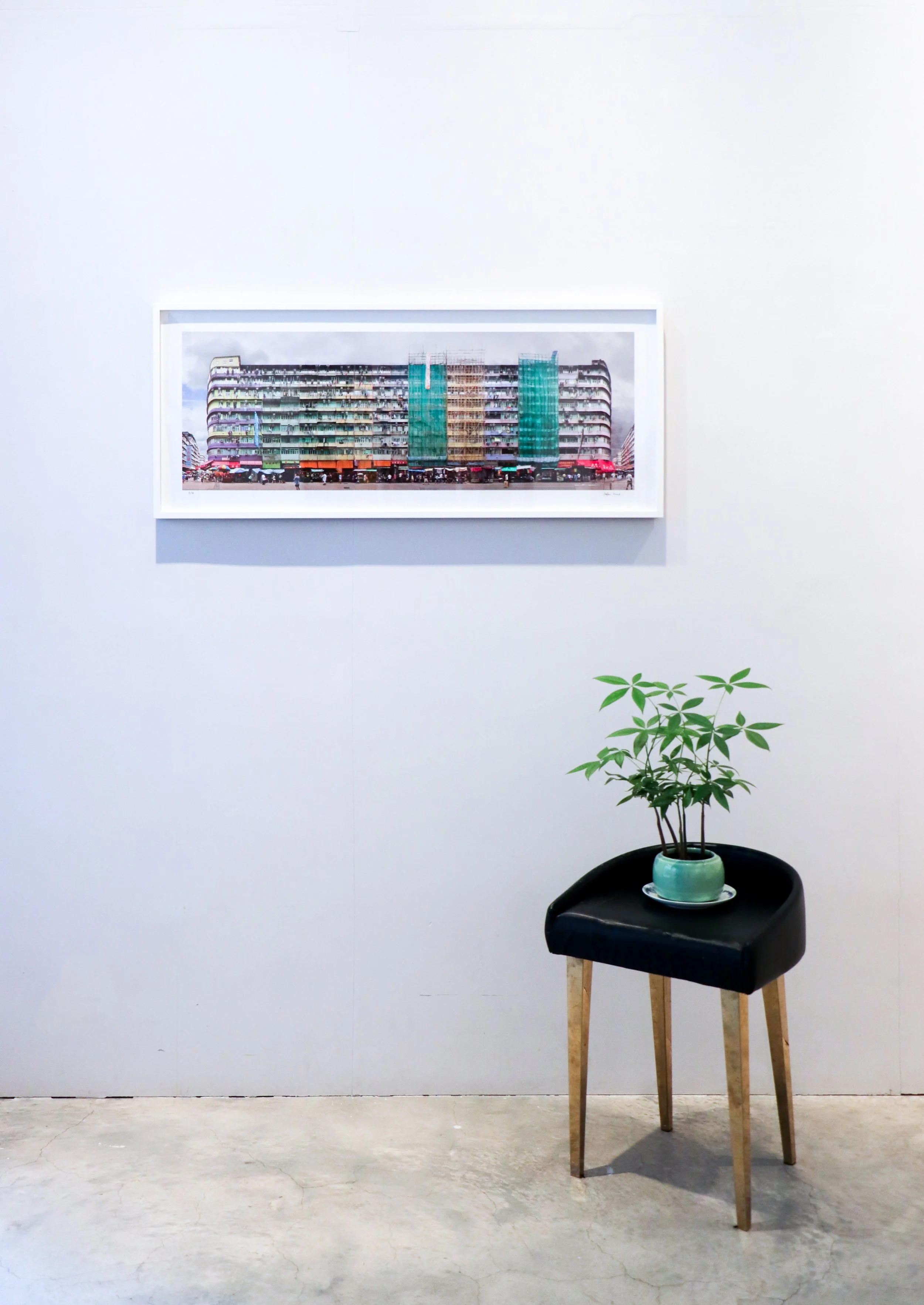Stefan Irvine, 'Ki Lung Street', Sham Shui Po 2014
Stefan Irvine, 'Ki Lung Street', Sham Shui Po 2014
Stefan Irvine - The Last Tong Lau
’Ki Lung Street’, Sham Shui Po
Photographs taken in 2014, digital collage completed in 2015
Archival Pigment Print
Prints are signed by artist on print below the image.
Small: Image size about H36 x 102 cm
HK$ 10,800 + Box-frame or Facemount HK$ 2,800
Edition of 18 + 2APs
Medium: Image size about H49 x 140 cm
Limited edition of 18 + 2 APs - SOLD OUT
Large: Image size about H71 x 203 cm
HK$ 36,000 + Box-frame or Facemount HK$ 6,000
Limited edition of 8 + 2 APs
Above is image size only, print size will include 6 cm bleed size all around (add 12 cm) and frame is another 2 cm all around (add 4 cm)
Above framing options are Baryta print with black or white box-frame with acrylic front allowing 5 cm white bleed / metallic pearl print with acrylic facemount with no white bleed. For alternative framing options please contact us.
For International shipping: Taxes/import duties are on behalf of client and are not included.
Ki Lung Street, Sham Shui Po | 基隆街,深水埗
Ki Lung Street runs through historic Sham Shui Po, a district situated in the northern Kowloon Peninsula. The nine- storey block featured in this panorama was built in 1963, and is a prime example of a post-war "Tong Lau (唐樓)” or "Shophouse (店屋)", a type of tenement architecture previously used throughout Southern China for mixed residential and commercial purposes. This block also features the much-loved curved corners at either end, an architectural feature that is increasingly rare in today's modern buildings. Given the high rate of urban decay in the area, Sham Shui Po is a major target for urban renewal projects and such traditional tong lau are rapidly being replaced by new high rises.
Ki Lung Street - more colloquially known as “Button Street” - is one of the go-to streets in Hong Kong for purchasing wholesale fabrics, fasteners, sequins, feathers, buttons, and other garment accessories. The popup market stalls in this panorama are mainly dealing in ready-to-wear apparel; the wholesale fabric merchants are to be found along many of the neighbouring streets in Sham Shui Po and Cheung Sha Wan.
Another notable feature of this panorama is the use of 100% natural bamboo scaffolding for construction, a traditional practice which is still used widely throughout Hong Kong today - 5 million bamboo rods are imported into the city every year.
基隆街貫穿位於九龍半島北部、歷史悠久的深水埗區。這幅全景圖中的九層高建築物建於1963年,是戰後唐樓或中式店屋的典範;而中式店屋又稱為「下舖上居」,是一種常見於華南地區及東南亞的混合住宅和商業用途的建築模式。而基隆街還具有其標誌性的彎曲轉角樓宇,是當今現代建築中愈來愈少見的建築特色。鑑於該地區老化率高企,深水埗是其中一個城市更新項目的主要目標,當中傳統的唐樓建築正在迅速被新建高層大樓所取代。
基隆街 - 俗稱為「鈕扣街」,是香港購買批發布料、拉鏈、珠片、羽毛、鈕扣和其他服裝配件的首選街道之一。這幅全景圖的地面店鋪攤位主要是成衣服裝;而在深水埗和長沙灣的很多鄰近街道都可以找到批發布料的商人。這幅全景圖另一個引人注目的地方,是圖中正在使用100%天然竹製的鷹架進行的大廈維修;這種傳統的建築做法,俗稱「搭棚」,至今仍在香港廣泛地被使用 - 而每年約有500萬枝竹支進口到香港。



